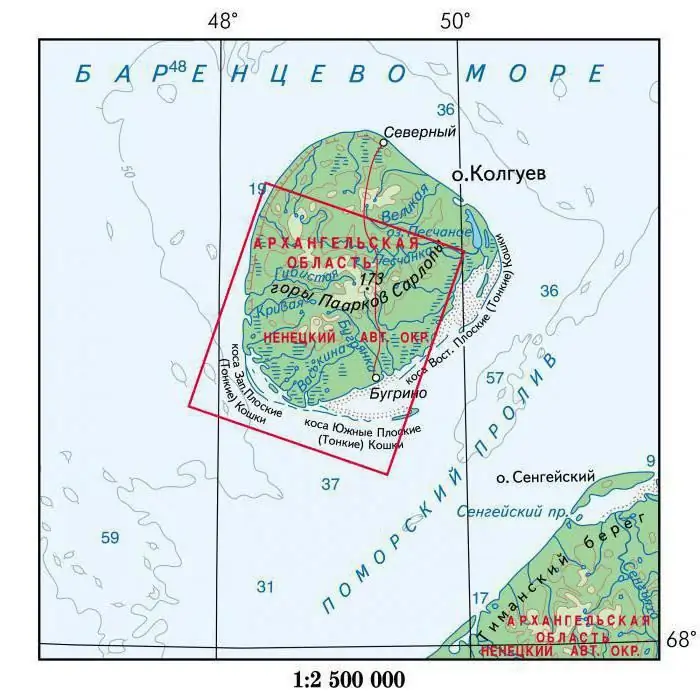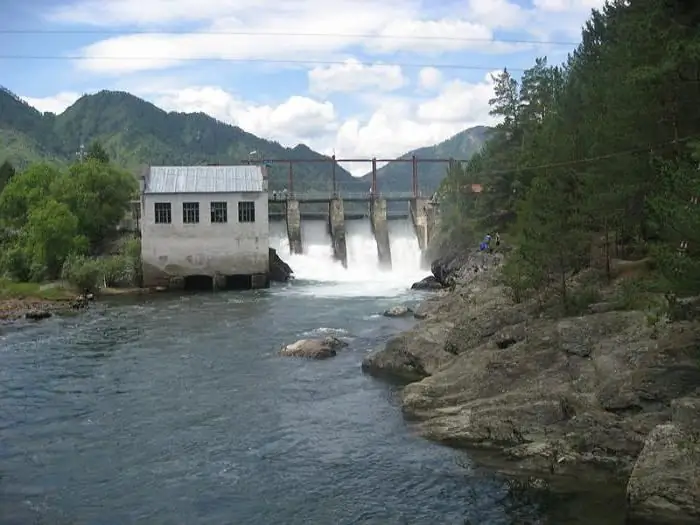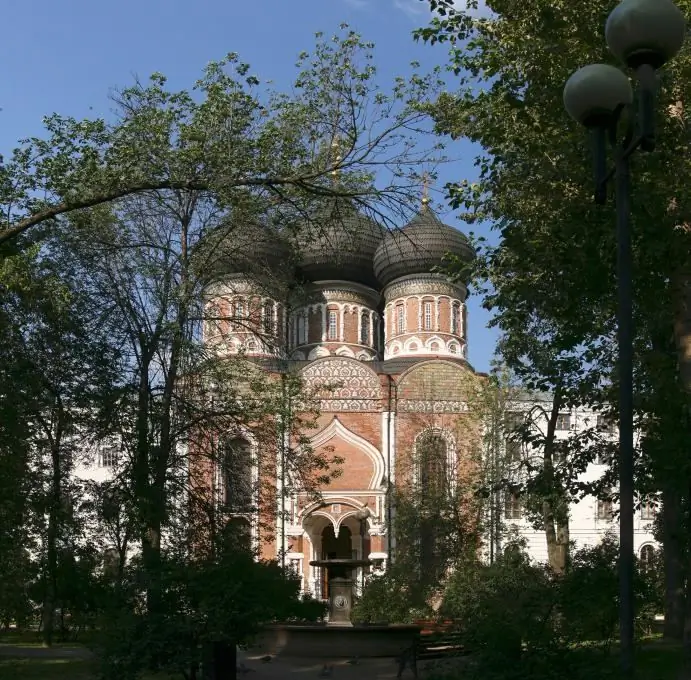- Author Harold Hamphrey [email protected].
- Public 2023-12-17 10:06.
- Last modified 2025-01-24 11:10.
Dominica is associated with a kind of geographical confusion. Many take it for the Caribbean republic of the same name. Our article aims to clarify this issue. All three political and geographical objects are located in the Caribbean Sea. But that's where the similarity ends. The Dominican Republic occupies the eastern part of the rather large island of Haiti. It is located in the Greater Antilles archipelago. But the Commonwe alth of Dominica occupies a whole, albeit small, island. This is a completely different state, with its own government, currency and history. Geographically, Dominica belongs to the Lesser Antilles group in the Caribbean. In terms of population and modest territory, the country is considered a dwarf state. The tourism sector of the economy in it is only gaining momentum and so far lags far behind the promoted Dominican Republic. But the Commonwe alth has a great future. The country is often referred to as the "Nature Island of the Caribbean", hinting at the pristine nature of the scenery.

Geography
Dominica is barely visible on the world map. Its area is only 754square kilometers. Let's try to find it on the map. The Lesser Antilles (also called the Windward) Islands stretch in a narrow strip from north to south, outlining the eastern borders of the Caribbean Sea in an arc. This archipelago includes many dwarf states, such as Saint Martin (Saint Martin), Antigua and Barbuda, Grenada. Dominica is located approximately in the center of this cluster of islands. It borders Guadeloupe in the northwest and Martinique in the southeast. The Lesser Antilles are formed by volcanic activity. Of these, Dominica is the youngest. But there are no active volcanoes on the island. Only hot springs and geysers indicate that the bowels have not yet calmed down. The highest point is the extinct volcano Diabloten (1447 meters above sea level). This mountainous island hosts the world's second largest ever-boiling lake.

Climate
Dominica Island is located at about fifteen degrees north latitude. And because the climate there is humid, tropical. The air temperature here fluctuates throughout the year in the range of +25 … + 27 degrees. In the west of the island, near the sea, there are relatively dry areas. But in most of Dominica it often rains. There are two distinct seasons. From November to March, the weather is excellent. Showers, if they do, are short-lived, and precipitation falls at night. Then it's tourist season on the island. But from July to September it is better to refrain from traveling to Dominica. The island is currently in the zonehurricane action. Not later than in August 2015, the terrible typhoon Erica hit Dominica, throwing the country back twenty years in its development. The nature of the island is amazingly beautiful. The mountainous area is covered with lush jungle. Near the sea, there are beaches with golden or black volcanic sand. The rainforests are home to many plant and animal species not found anywhere else in the world. The water area off the coast of Dominica is teeming with living creatures. Therefore, the island is attractive for its sea fishing.

History of Dominica
When Christopher Columbus discovered this island to the world, it was the third of November 1493, Sunday. Therefore, the great navigator named the land area according to the day of the week (from the Latin word Dominicus). After that, the island of Dominica was forgotten by Europeans for more than a hundred years. In 1635, France laid claim to this territory. But twenty-five years later, the island was left at the disposal of the Carib Indians. But the French influence remained. Under the terms of the Paris Peace, signed in 1763, the island was ceded to Great Britain. The population sympathized with the French, and in 1778 they tried to return this colony back. But in 1805 Dominica officially became part of the British heritage. Slavery was abolished in all the colonies of the United Kingdom in 1834. Since the island was forcibly settled by immigrants from Africa, Dominica became the first territory where a Negroid majority was represented in the government. From 1958-1962, the island was part of the Federation of the West Indies. HowThe independent state of Dominica appeared on the political map of the world on November 3, 1978. This day is celebrated as a national holiday.

Modern political structure and state symbols
The form of government is a parliamentary republic. Dominica is governed by a President, who is elected by Parliament, and a Prime Minister. Currently, these are Charles Savarin and Roosevelt Skerrit. Dominica's anthem begins with the words "Island of Beauty and Splendor". The motto of the state is the phrase in Patois: "After God, we love the Earth." The Commonwe alth of Dominica has a very beautiful flag. On a green field (the color of the jungle) is a Sisseru parrot. This bird, also called the imperial amazon, lives only on the island of Dominica and nowhere else. This endemic also adorns the coat of arms of the parliamentary republic called Dominica. The country's currency is the East Caribbean dollar. It is quoted in relation to the American approximately as one to two and a half. The country is administratively divided into parishes. All of them bear the names of saints (which reflects the great authority of the Roman Catholic Church on the island). There are ten parishes in total: David, Andrew, George, John, Joseph, Mark, Luke, Paul, Patrick and Peter.

Population
The island of Dominica is home to 73,607 people - the vast majority are distant descendants of Africans. Aborigines - Indians-Caribs - make up less than three percent of the total population. There are even fewer white Europeans - 0.8%. State of Dominica -urban. About seventy percent of the population lives in cities. Although the well-being of the country largely depends on the success of agriculture. The capital of the country is Roseau. This is not a metropolis at all, although it is the largest city on the island. Its population is only eighteen thousand people. People on the island mostly live long: 80 years - women, 74 years - men. The population density is 94 people per square kilometer. English is recognized as the official state language. In the countryside, people speak Patois. It is a local dialect based on the French language.

Culture
The Caribbean island of Dominica is an ethnic cauldron in which representatives of various ethnic groups coexist. Although, when the Europeans arrived on these shores, only two tribes lived there - the Kalinago and the Arawaks. Now the population is very diverse, and this affects the local culture. Dance and music - not a single more or less significant event in the country can do without them. That is why Dominica has become the stage for many festivals. So, since 1997, a week of Creole music has been held here every year. Also, a tourist who has visited this island simply needs to try the dishes of the local cuisine. It is mainly meat (usually poultry, but may also be lamb or beef) with a very spicy sauce. For dessert, mixes made from fruits are served.

Tourism
The backbone of the economy of the Dominican Commonwe alth is the cultivation of bananas,cocoa, coconut palms, tobacco, citrus fruits and mangoes. Tourism is the second important industry. It is gaining momentum every year. Melville Hall International Airport operates near the capital of Roseau. But bank cards are still accepted only in the capital and resorts on the west coast. Tourists visit the island mainly in winter. Mostly people are attracted by beautiful beaches with fine black sand and the azure Caribbean Sea. On the east side, the island of Dominica is washed by the waters of the Atlantic Ocean. Therefore, safers also come here. The nature here is amazingly beautiful. There are many exotic birds in the forests, waterfalls and crystal streams rush down from the mountains. The heat is softened by the constantly blowing northeast trade winds. For citizens of the Russian Federation visiting the island for the purpose of tourism, a visa is not required. However, the stay in the Commonwe alth must not exceed twenty-one days.

Beaches
Relax on black sand washed by azure waters - isn't it a fairy tale? If you are an insecure swimmer, choose the west coast of the island. But even in the east there are areas where the high waves of the Atlantic Ocean do not make their way over the reef. These are sandy beaches south of Kalibishi. In general, the Republic of Dominica provides tourists with a wide selection of beautiful places for swimming. In the south of the island is "Champagne Beach". It's pebbly, but that's not the point. Hot springs emerge in shallow water. Air bubbles gave the name to the recreation area. For snorkeling, this is a great place, as there is a coral reef nearby. And lovers of noisy fun recreation on the watersuitable beach "Purple Turtle" (Purple Turtle) on the north coast. No less popular are Coconut Beach, Mero and Napiers.

Attractions
Dominica Island has everything to surprise a tourist. Number one on the must see list is Boiling Lake. As the name implies, the water in it boils due to fading volcanic activity. The UNESCO-listed lake is located in the Morne Trois Pitons National Park. Masterpieces created by nature itself are the waterfalls of Pain, Brandi, Sari-Sari. In the capital of the state, Roseau, you should see Fort Shirley and the Old Market, where slaves were once sold. Also on the list of attractions is L'Escalier Tete Shin.

When a volcano erupted thousands of years ago, a vast field of petrified lava was formed. This lunar landscape is considered sacred by the locals and many legends are associated with it. It is worth staying on this Caribbean island for at least a couple of days to understand why Dominica is ranked the fourth happiest country in the world (according to the New Economic Foundation).






